The Sacred Mushroom | Interview | “A Jewel of 60s Psych-Blues”
The Sacred Mushroom, a prominent band in Cincinnati’s music scene, burst onto the scene in the late ’60s. They swiftly captivated audiences with their self-titled album and a whirlwind of unforgettable gigs.
Their rise to local prominence began with the release of their debut 45 under the Minaret label, followed by their celebrated album on Parallax Records. Drawing inspiration from iconic acts such as The Paul Butterfield Blues Band, Taj Mahal, and The Beatles, The Sacred Mushroom delivered dynamic performances at various venues across Cincinnati and college campuses, leaving an indelible mark on the city’s music scene.
Led by guitarist and songwriter Larry Goshorn, alongside his younger brother, vocalist Tim Goshorn, the band found its home in a communal living space dubbed the “Mushroom House,” providing sanctuary from the confines of mainstream society. In 1967, they recorded their debut 45rpm 7″ single, ‘Break Away Girl’ b/w ‘Yellow Fever,’ which garnered local and regional airplay, setting the stage for their ascent.
Their musical journey culminated in the release of their eponymous album in 1969 on NYC label Parallax Records, a subsidiary of Audio Fidelity Records, which showcased a blend of original compositions and cover tracks including T-Bone Walker’s ‘Mean Old World’ and Ray Davies’ ‘I’m Not Like Everybody Else.’
Following the dissolution of The Sacred Mushroom in 1969, both Larry and Danny Goshorn embarked on a new chapter by joining the ranks of the Cincinnati band Pure Prairie League, alongside their brother Tim Goshorn. Their contributions to Pure Prairie League spanned the 1970s and 1980s, eventually leading to the formation of The Goshorn Brothers Band.
In a recent interview, Douglas (Ross) Hamilton, a member of The Sacred Mushroom, provided insights into the band’s history and legacy.
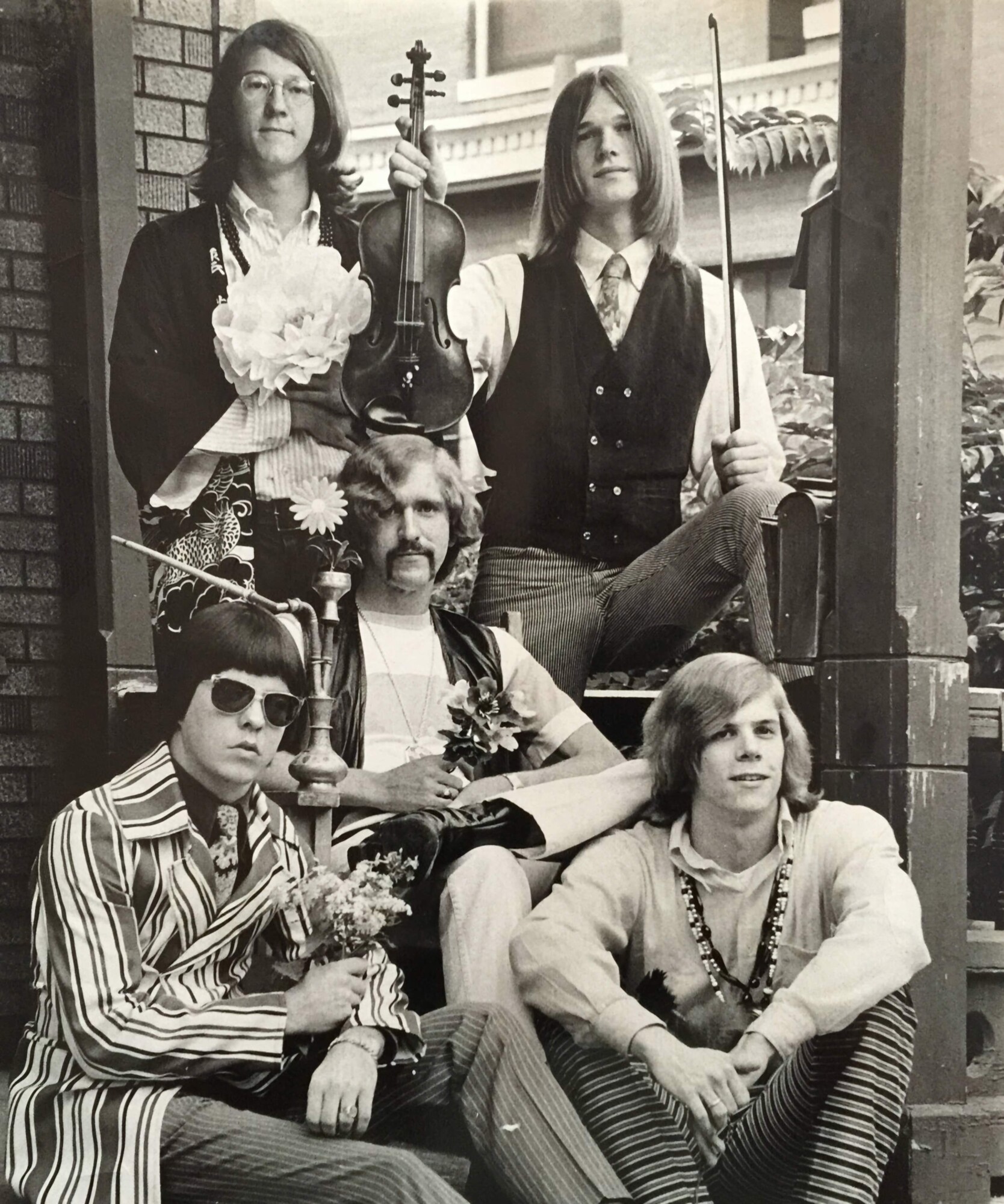
“Everything turned into like marshmallow”
Where and when did you grow up? Was music a big part of your family life? Did the local music scene influence you or inspire you to play music?
Douglas (Ross) Hamilton: I was born in New York City in 1948 but moved to Cincinnati, Ohio in 1957. My parents loved all the hit Broadway musicals, and we listened to them almost constantly. I memorized all the lyrics along with everything on the Top 40 radio that I liked. The local scene featured few rock bands except for Lonnie Mack, who played regularly around town—especially on the west side.
My first band was at age 16—the Fugitives. We were a trio and played mostly instrumentals. There were only a small amount of vocals because in those days most guitar bands didn’t vocalize unless you had a lead singer. Kenny Poole went on to become a very good jazz musician, so he never vocalized.
Bob Franklin went on to play professionally in Las Vegas but is now retired—just a studio musician with no Wikipedia page.
I sang in my high school choir and went on road trips with them. By the time I was a junior (age 17), I was playing drums professionally.
The Sacred Mushroom all went to the same high school.
Joe (John) Stewart had a twin brother who died in his 30s. Joe went on after the Mushroom to find college in Danville, Kentucky, then went on to graduate college where he studied architecture and art. After returning home, he decided to become a builder and made a small fortune “building houses for rich people”—as he put it.
Fred Fogwell was the rhythm guitarist for the Mushroom. His main job was assisting Larry Goshorn, who usually enjoyed playing lead. There wasn’t enough money in the local rock scene, so Fred took odd jobs. One summer, he was offered work out west (perhaps in Las Vegas?) where he fell seven stories while under a painting contract. He lived for some years after coming home, but finally succumbed to his injuries. We all loved and missed Fred despite, on rare occasions, him being mistaken for Clarabelle the Clown due to his bright red hair.
Dan Goshorn was an Army Reservist, and after he finished his duty time, moved to Washington D.C., where he started an antique dealership specializing in valuable pieces and techniques in restoration, which he taught at American University at night. Dan managed a very high tenor with the Mushroom, and after the band split up, he sang with the Modulators before leaving town.
When did you begin playing music? What was your first instrument? Who were your major influences?
I started playing piano at age 6, then drums at age 14. I liked ragtime and jug band music, as well as most folk. Rhythm and blues came later after Gene Krupa, Louis Bellson, and Buddy Rich, although Joe Morello had me spellbound. During the rock years, it was Lonnie Mack until the Beatles came out. Bob Dylan, of course. On the Mushroom album, I played the vibes (in ‘I Take Care’ at the end) as well as the drums and percussion.
What bands were you a member of prior to the formation of The Sacred Mushroom?
I was a member of the Fugitives, the Crondels, the Rubber Band (a name I borrowed from the Young Rascals), the Blue, and finally the Sacred Mushroom.
What was the first song you ever composed?
The first song I ever composed was a lyric poem put to a popular Top 40 song here in the USA: ‘Monster Mash.’ It’s a good story. It was about my sophomore year’s biology teacher, Mr. R.C. Vickers. He used to pick his nose while we did tests, and I don’t think he thought anyone was watching him. Well, the lyric got picked up by the cheerleaders, and the five of them worked out a little dance routine, singing the lyrics. They called it “The Vickers’ Pick,” and everyone who took the time to listen was entertained. Fast forward to the beginning of the next school year, 1964. I’m walking down the main hall on the first week of school and suddenly, Mr. Vickers takes me aside and says, “Doug, I just wanted to thank you with my wife for writing that song that the cheerleaders were singing at all the school’s sports events. The school board got together and decided that I might be better situated as a school counselor. Now I have a new office and a raise.” I was never so surprised at anything in my life up to that time.
Were you or other members in any bands before forming The Sacred Mushroom? Are there any recordings from that period if they were in bands?
No, Larry Goshorn and Joe Stewart both had folk guitar acts in the Withrow High School show—the same year I had a drum solo, but that was it. I was the only one in a band. Tim Goshorn hadn’t learned to play any instruments yet—he was four or so years younger than his brothers. In fact, although Wikipedia says Tim was a member of the Mushroom, he never was. That’s all a lie, and we’ve never been able to figure out who did it.
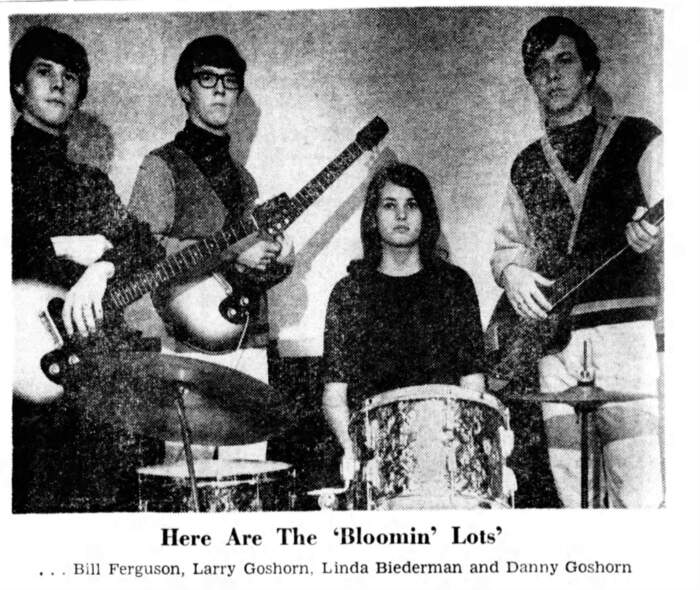
Could you elaborate on the formation of The Sacred Mushroom?
Essentially, because we were all friends in high school, all we had to do was get Joe to adapt to the bass, and teach Fred how to sing a little, and we were off. I recall that in the summer of 1966, my parents had taken my two younger siblings on vacation out west to California and Disneyland. There was no Disney World then. I had the house to myself, and my drums were set up in the basement with some amplification for guitar. Fred and Larry had driven all night to New York City to buy a couple of lids of good marijuana, and we set up a hookah (bong) in the living room. I recall smoking like seven hits, but nothing happened. Then, almost all of a sudden, we all got really stoned. This was August ’66. We went downstairs and started to play, but the floor, walls, and everything turned into like marshmallow. Time seemed to slow down, and we just started laughing uncontrollably until we were exhausted. I guess that was the beginning, unofficially, of the SMB. A year later, we still didn’t have a name. We had rented a house at 2411 Upland Place in Walnut Hills, not far from Merguard’s Bowling and right next door to a funeral home. It was the afternoon, and we decided that, using a good dictionary, we would close our eyes and open the dictionary to whatever page turned up (as related above). Larry did it and pointed, with eyes still closed, to Sacred Mushroom.
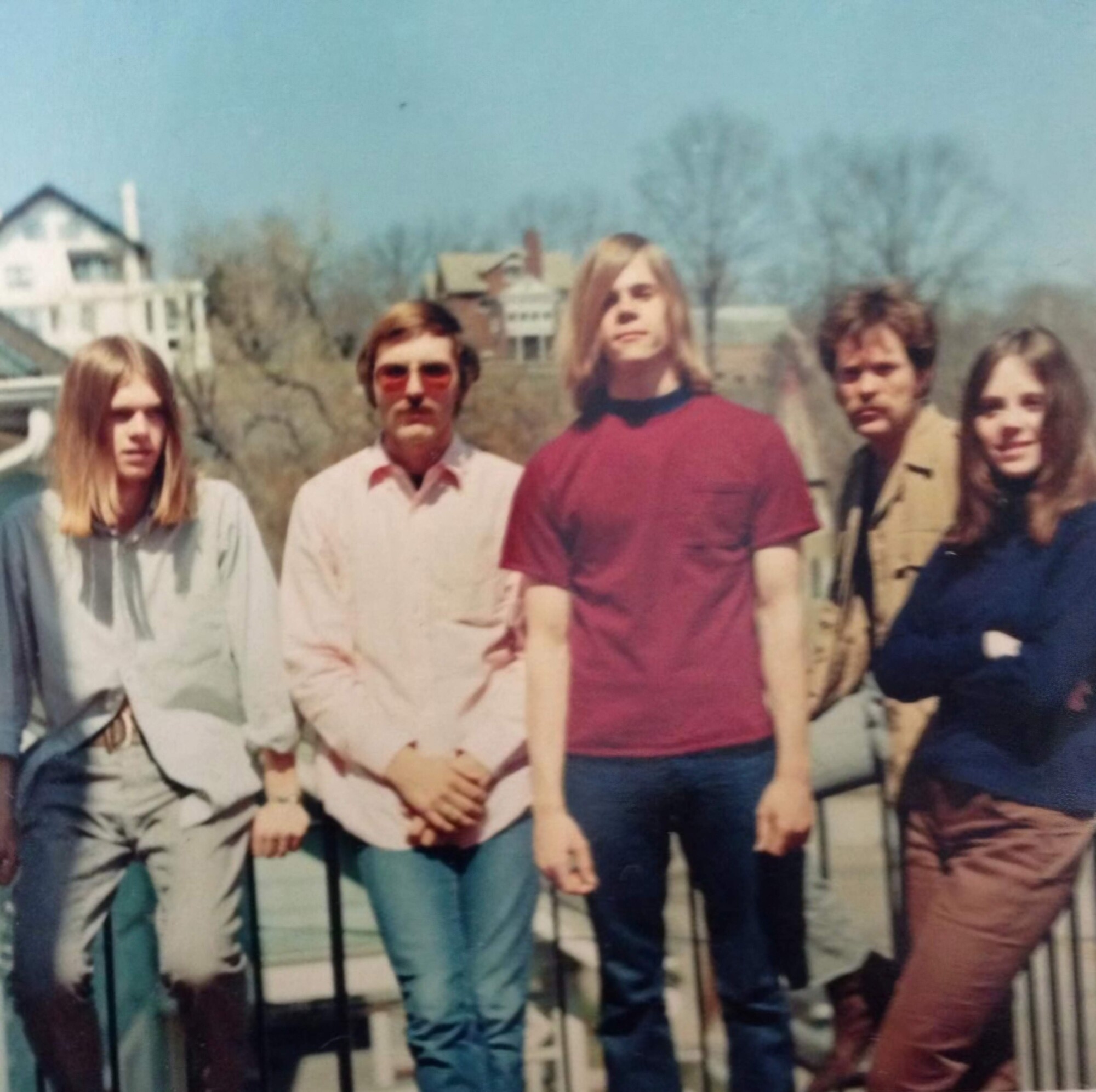
When and where did The Sacred Mushroom play their first gig? Do you remember the first song the band played? How was the band accepted by the audience?
Our first job (a gig is a job at a single venue that lasts at least a week). The term originated in New Orleans where frog legs are often on the menu in restaurants. A frog gig is a sharp, three-barbed steel instrument with which the restaurant food suppliers catch frogs for their legs among the many small ponds, lakes, and swamps around New Orleans). Our first actual job was on the grass in front of the College of Law at the University of Cincinnati. It was the 60s, and political problems were everywhere. Someone decided to literally cut our electric lines, but we managed to get them back on. The first song we played was ‘Chains,’ written by Carole King and performed by the Cookies.
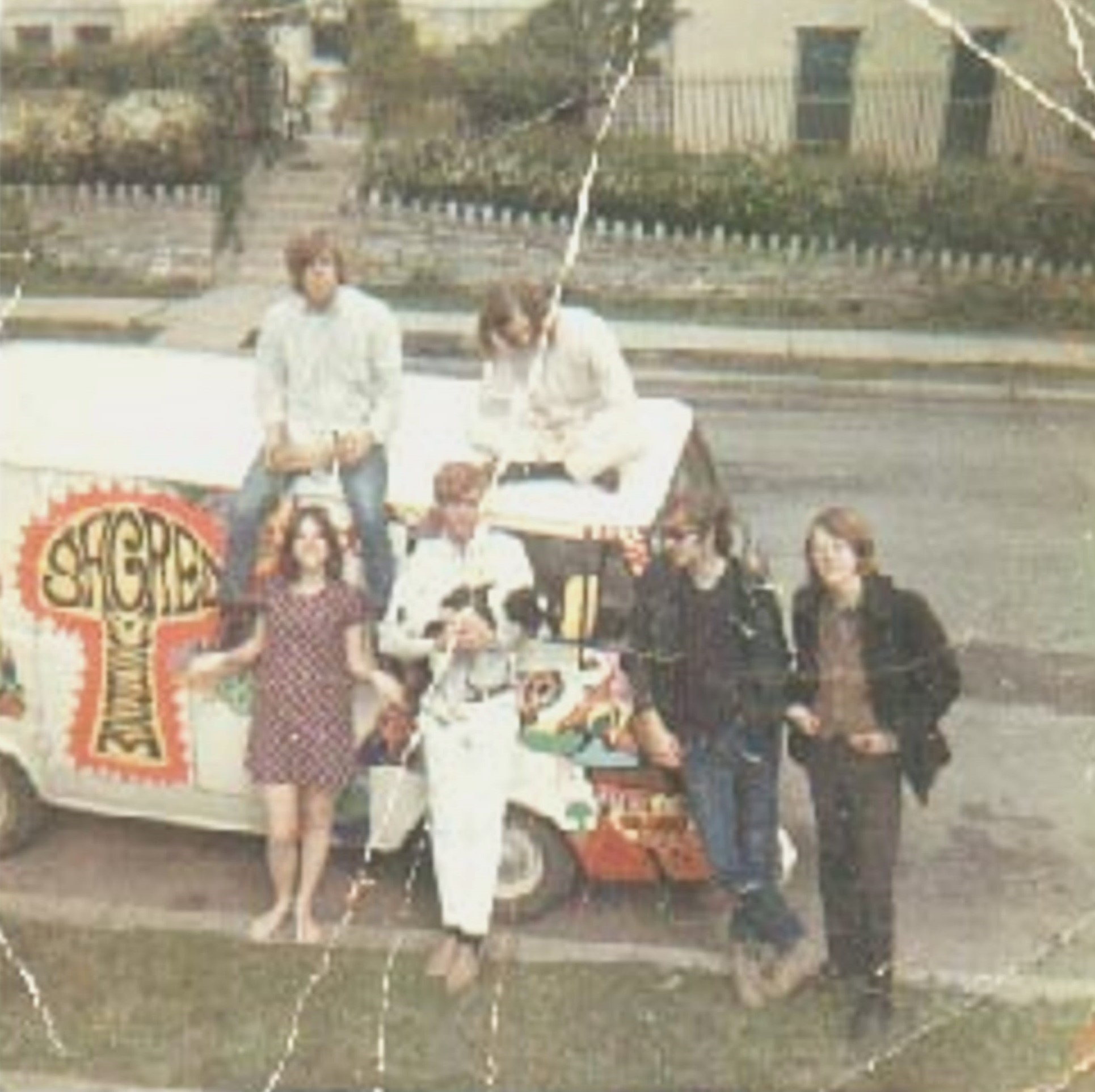
What sort of venues did The Sacred Mushroom play early on? Where were they located?
The Sacred Mushroom played at various colleges, high schools, country clubs, and campus beer halls, mainly in Cincinnati. The Glass Dome is where we opened for the great Taj Mahal. The Mug Club was our most regular gig. It was two blocks from the Glass Dome in Clifton (University of Cincinnati Campus). Two blocks further west was the Pickle Barrel, and three blocks east on McMillan was a club called the Nebish. All of these were on campus, and none exist now.
Were you inspired by psychoactive substances like LSD at the time of writing the album?
Yes, but not as much as most people think. I got involved as a partner in a company out of San Antonio, Texas called The Perpetual Garden. That was in 1981. Mushrooms were still legal in Texas then, and my partner, Tom Van Doozer, had figured out how to create a liquid mycelium and was sending out $5 mason jars all over the country that fruited mushrooms in less than 4 days. Sadly, his formula has been lost and Tom passed away.
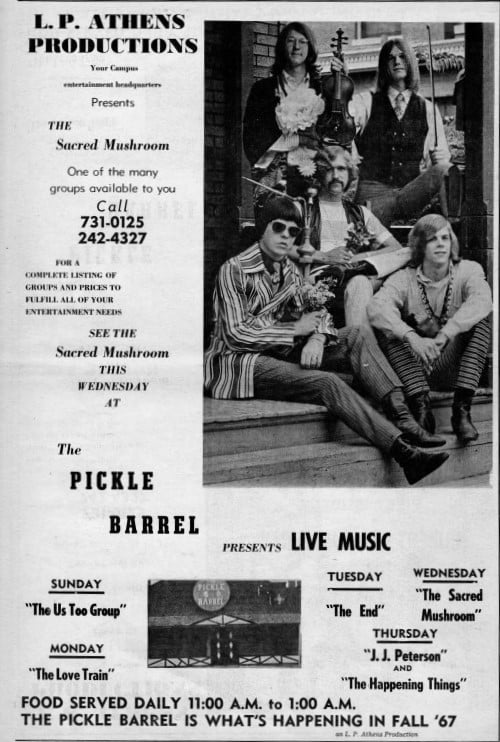
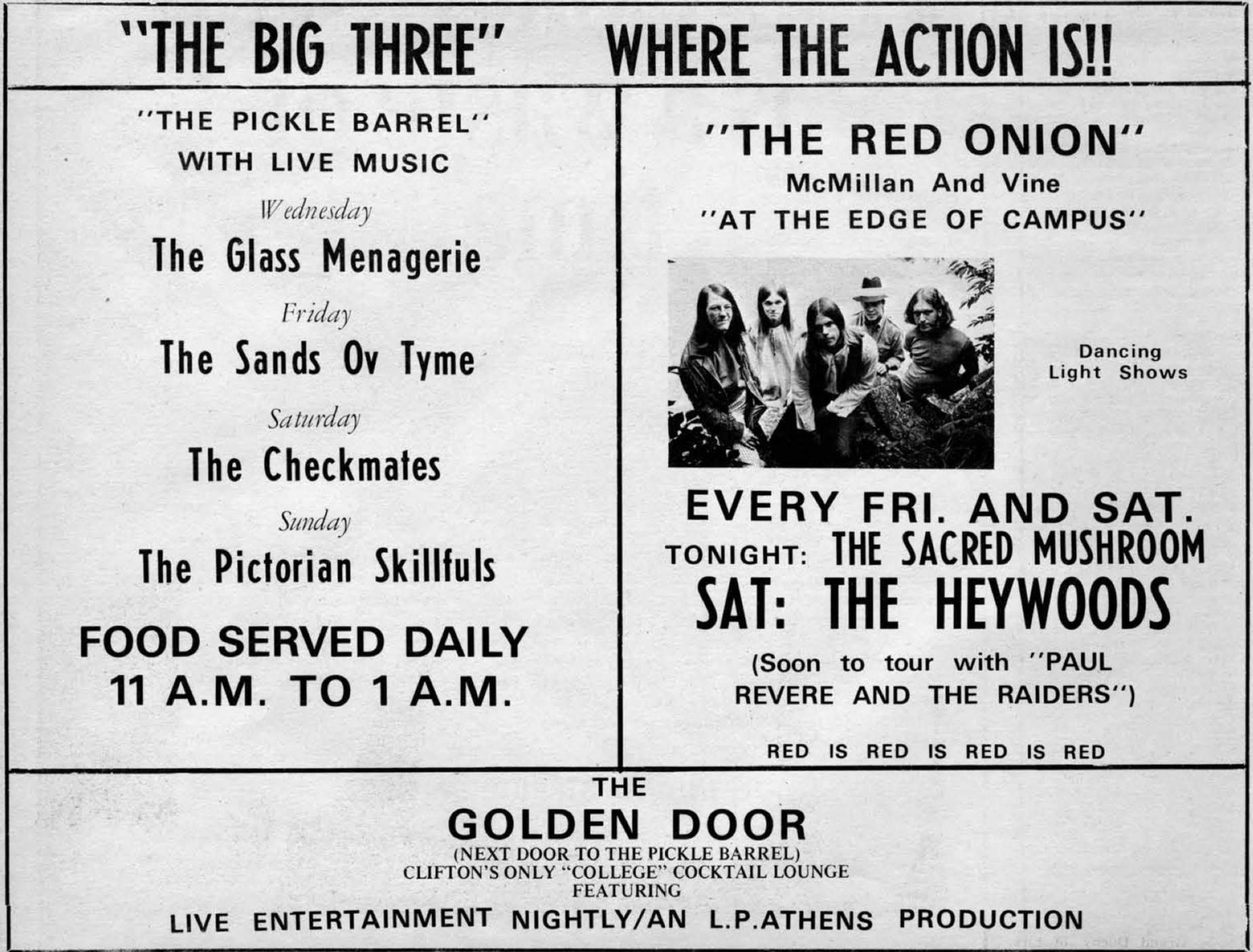
What influenced the band’s sound?
Basically, it was The Paul Butterfield Blues Band out of Chicago; The Blues Project (New York), Taj Mahal (LA), Beatles, B.B. King, Muddy Waters, and many more including Hendrix and Cream.
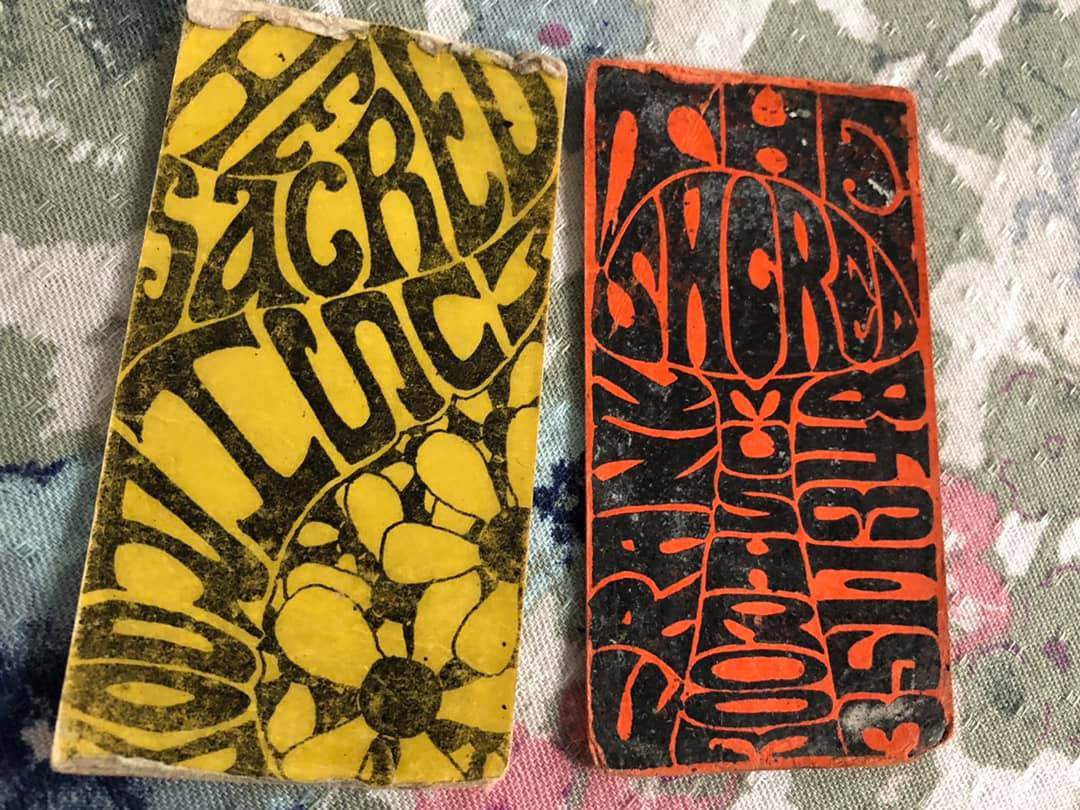
What was the scene in Cincinnati? What were some other bands worth mentioning?
One notable band from the Cincinnati scene was The Lemon Pipers.
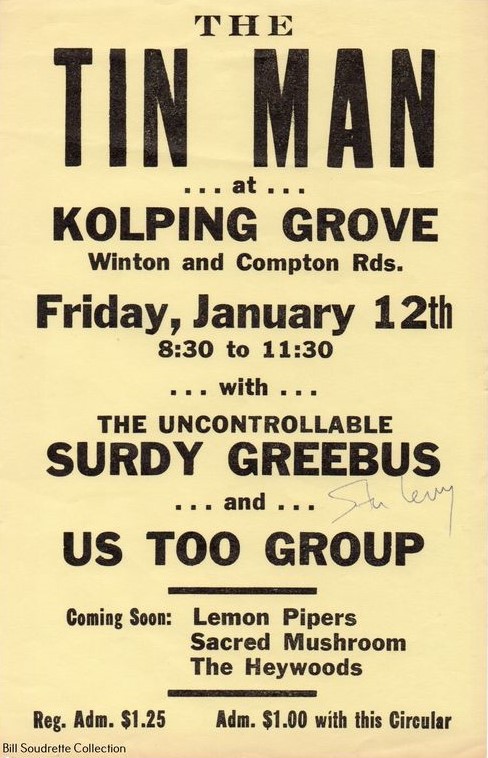
The band recorded a debut 45 for the Nashville-based Minaret label which received some local airplay with ‘Break Away Girl’ b/w ‘Yellow Fever.’ What do you remember from it?
I recall recording at Bradley’s Barn. Shelby Shingleton, a young entrepreneur from Nashville, stopped our album after it was considered in Playboy’s Top 100. He had cut ‘Break Away Girl’ b/w ‘Yellow Fever’ at Bradley’s but never helped us anymore. A year later, we cut the Sacred Mushroom album with Don Litwin in Cincinnati, but Shingleton saw that it made the charts in Playboy and set up a court injunction to prevent any more copies from being pressed. Basically, that was the end of the Sacred Mushroom.
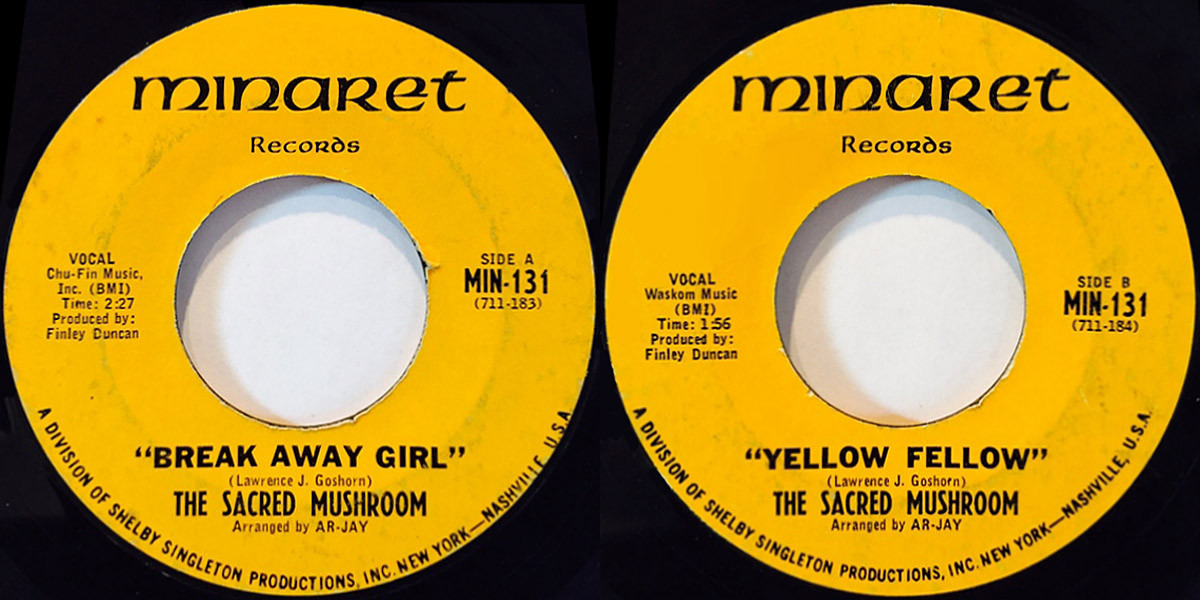
How did you get signed to Parallax Records? And what’s the story behind Parallax Records?
Parallax was Don Litwin’s label, which he founded with Herman Gimble, the Department Store mogul from NYC.
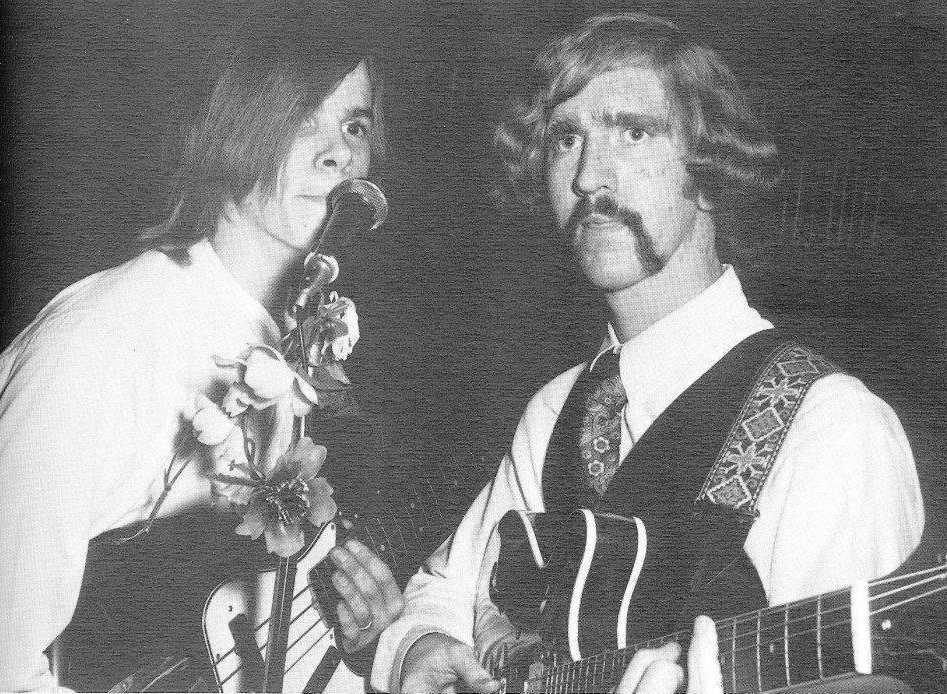
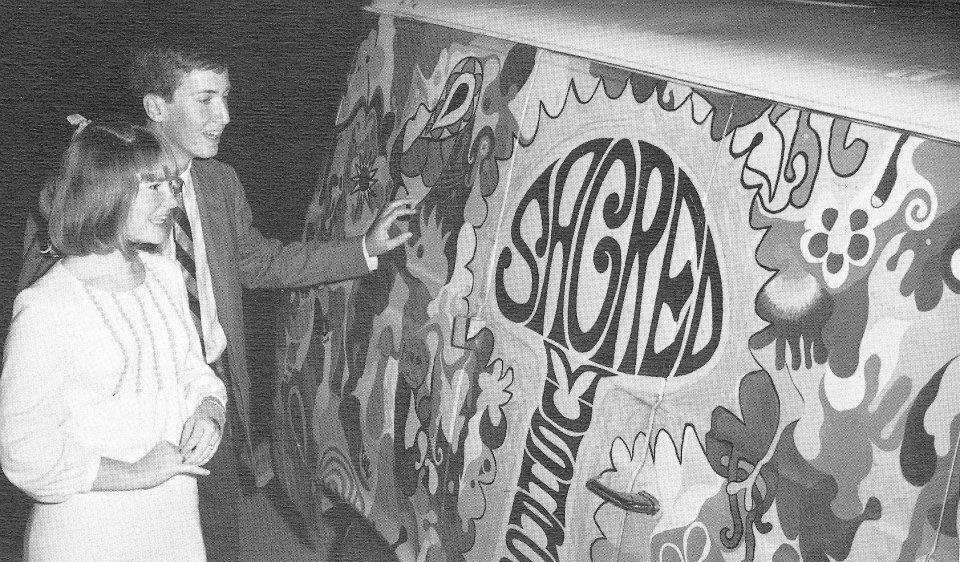
What’s the story behind your debut album? Where did you record it? What kind of equipment did you use, and who was the producer? How many hours did you spend in the studio? Please share your recollections of the sessions. What were the influences and inspirations for the songs recorded?
The album was recorded on a 4-track machine at Jewell Records in Mount Healthy, a community here in Cincinnati. We spent two days in the studio. There were all sorts of magnetic and electrical weirdness going on there, and on the last day of recording, a three-inch long, bright needle-like projection of violet light projected for about ½ hour out of my sternum. All the guys in the band saw it, and we were all mystified. Cincinnati is built upon seven large hills named after the seven hills of Rome. Cincinnatus was a Roman God, and Mount Healthy was one of our seven hills. Jewell Records was right at the top of the hill and was known for its supernatural events, including many lightning strikes. We all played better than we’d ever played.
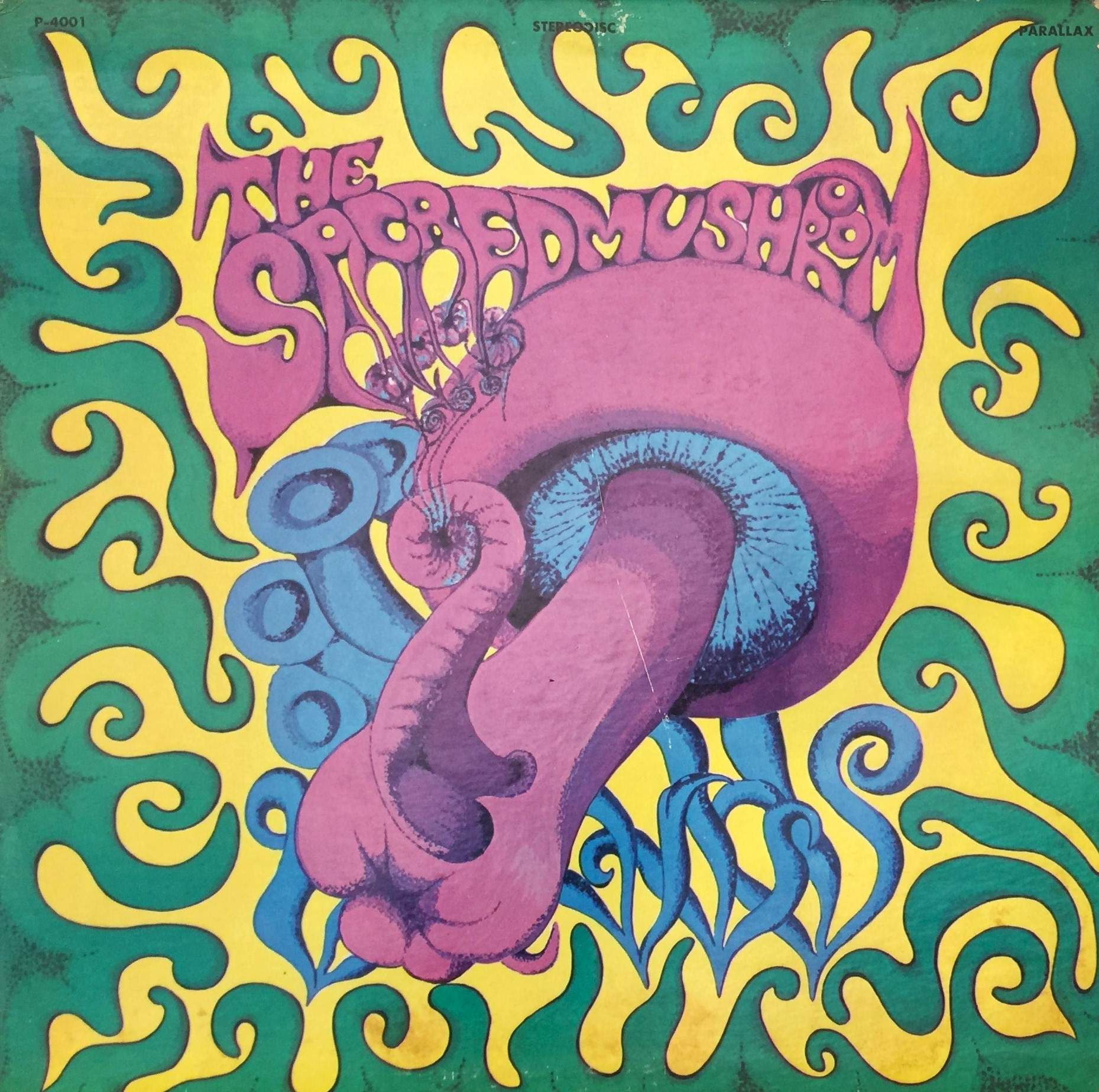
How pleased was the band with the sound of the album? What, if anything, would you like to have been different from the finished product?
We would have made it an all-blues album.
Was there a certain concept behind the album?
We were just trying to get a blues-rock-jazz sound. Here’s the best example: it’s named ‘Catatonic Lover.’
I absolutely adore the cover artwork. Who’s behind it, and what was the concept behind it?
Larry, who threw away a career in art for music, created the cover artwork. It’s his work. We’ve tried it with different colors, which yielded interesting results.
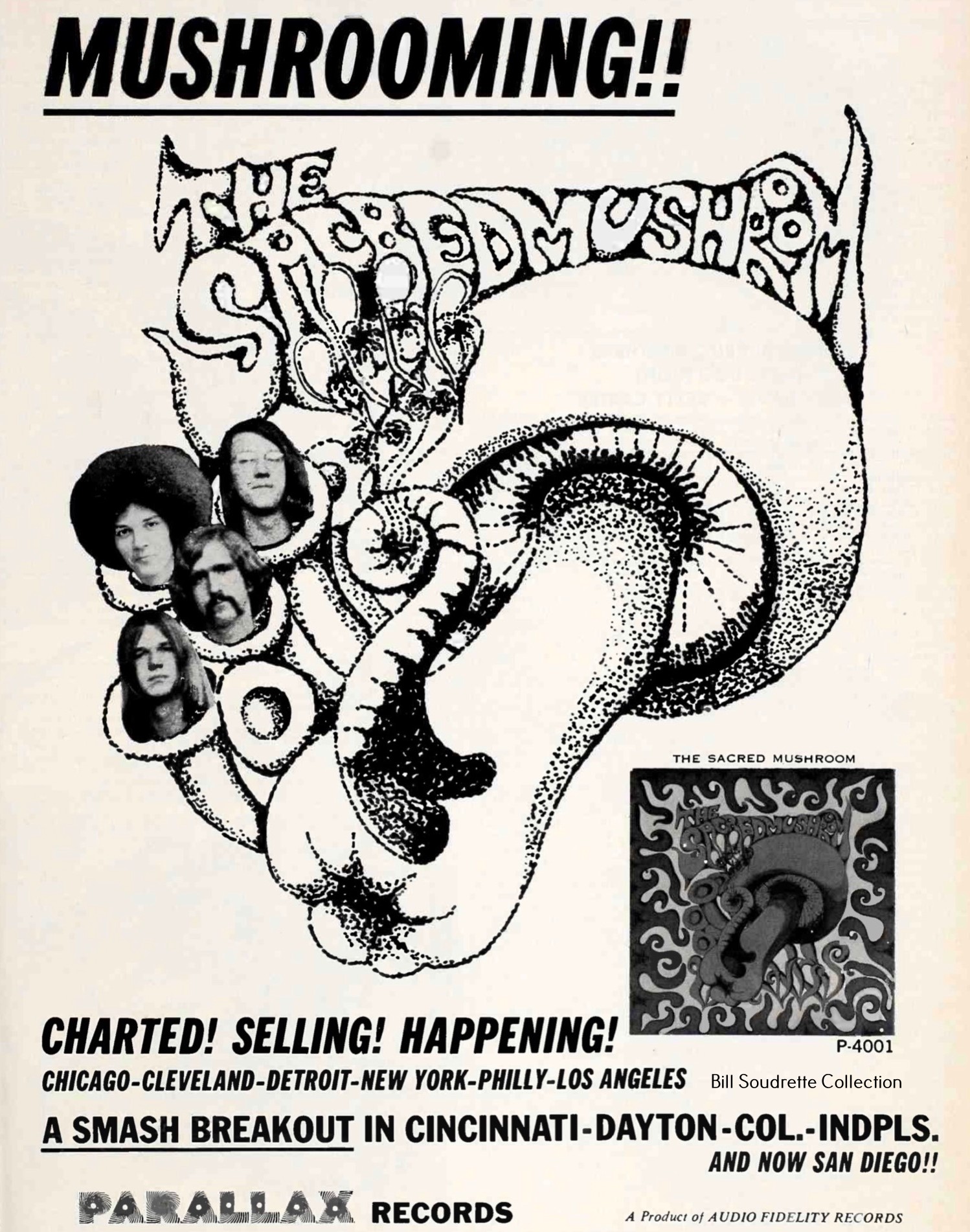
The band was well known for live shows.
We opened for a number of bigger names but weren’t known for our showmanship except when we were fooling around. We had a harmonica man named Al, with whom I worked a drums-and-brushes only for his background. Blues.
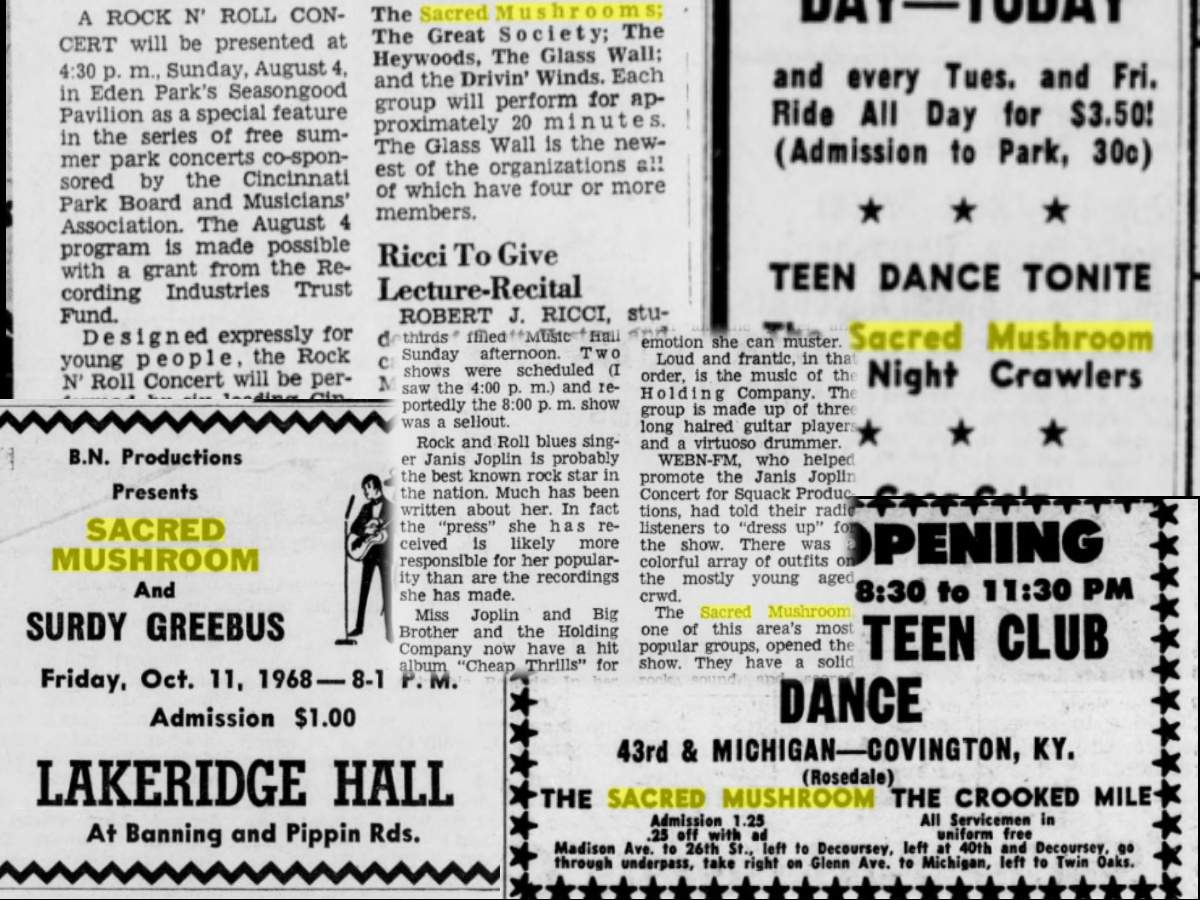
What happened after the band stopped? Were you still in touch with other members? Is any member still involved with music?
Fred died. Joe started a large construction company; Larry joined Pure Prairie League and had two gold albums. While he was on tour, a fire swept through one of the canyon communities in Los Angeles where he’d bought a house. All his wardrobe, guitars, and even the gold records were destroyed, leaving the gold records in a puddle on the floor. After that, he came back to Cincinnati and lived with his parents before trying to pull together another group. Larry Goshorn partnered with his brother Tim in a band called Mushroom Jones before joining Pure Prairie League.
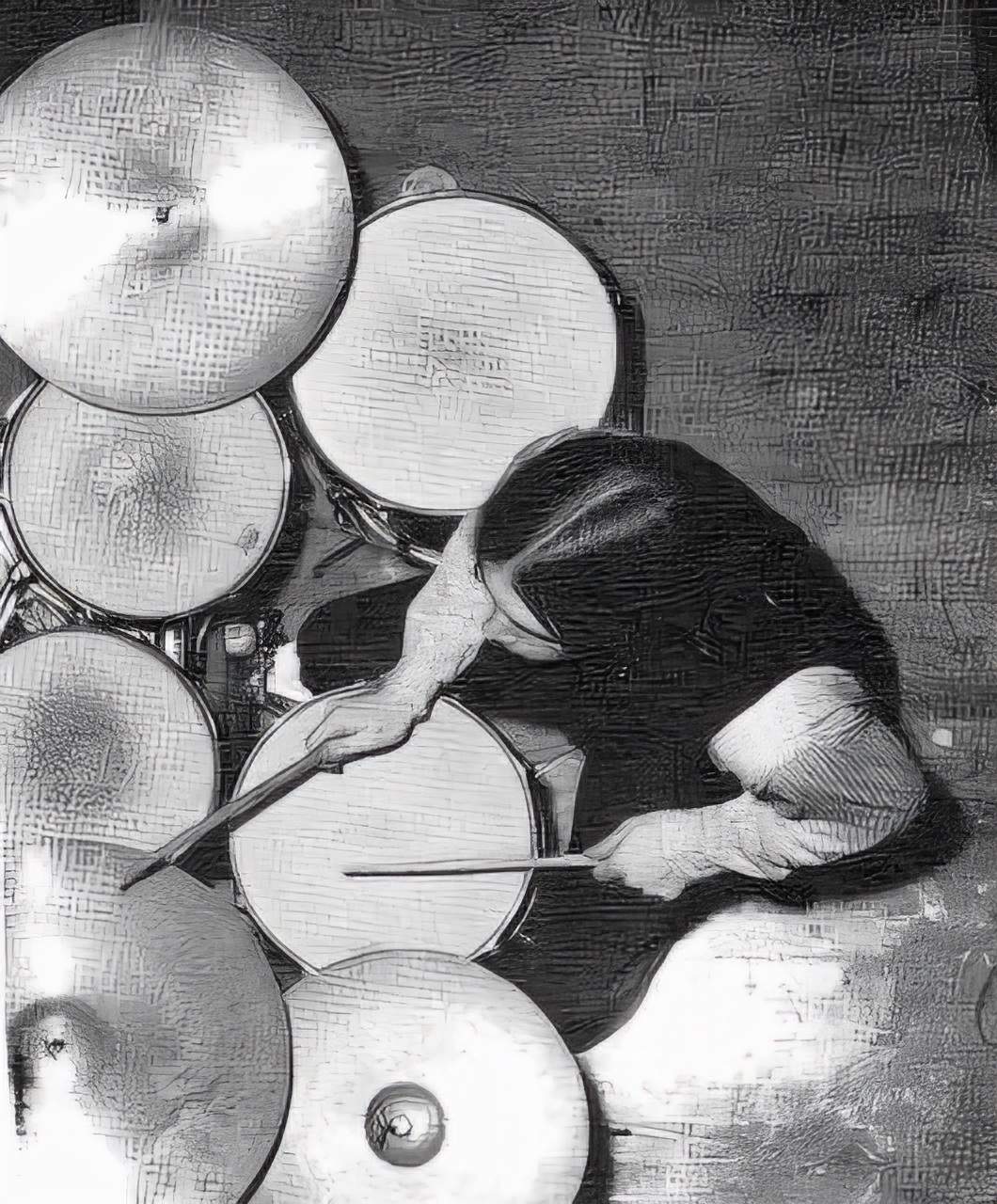
Did they record anything as Mushroom Jones?
No, nothing. Eventually, Larry got Tim into Pure Prairie League—but again, Tim was never in the Mushroom—he was too young! No one still does music.
Larry Goshorn also recorded a solo album in 1971. I never heard it, but I saw there must be an acetate somewhere. Do you know more?
He recorded that in California. I’ve seen pictures of the cover but never heard it. One of his “friends” stole all the songs and copyrighted them in his own name. We should have called Larry “Bad Luck Larry.”
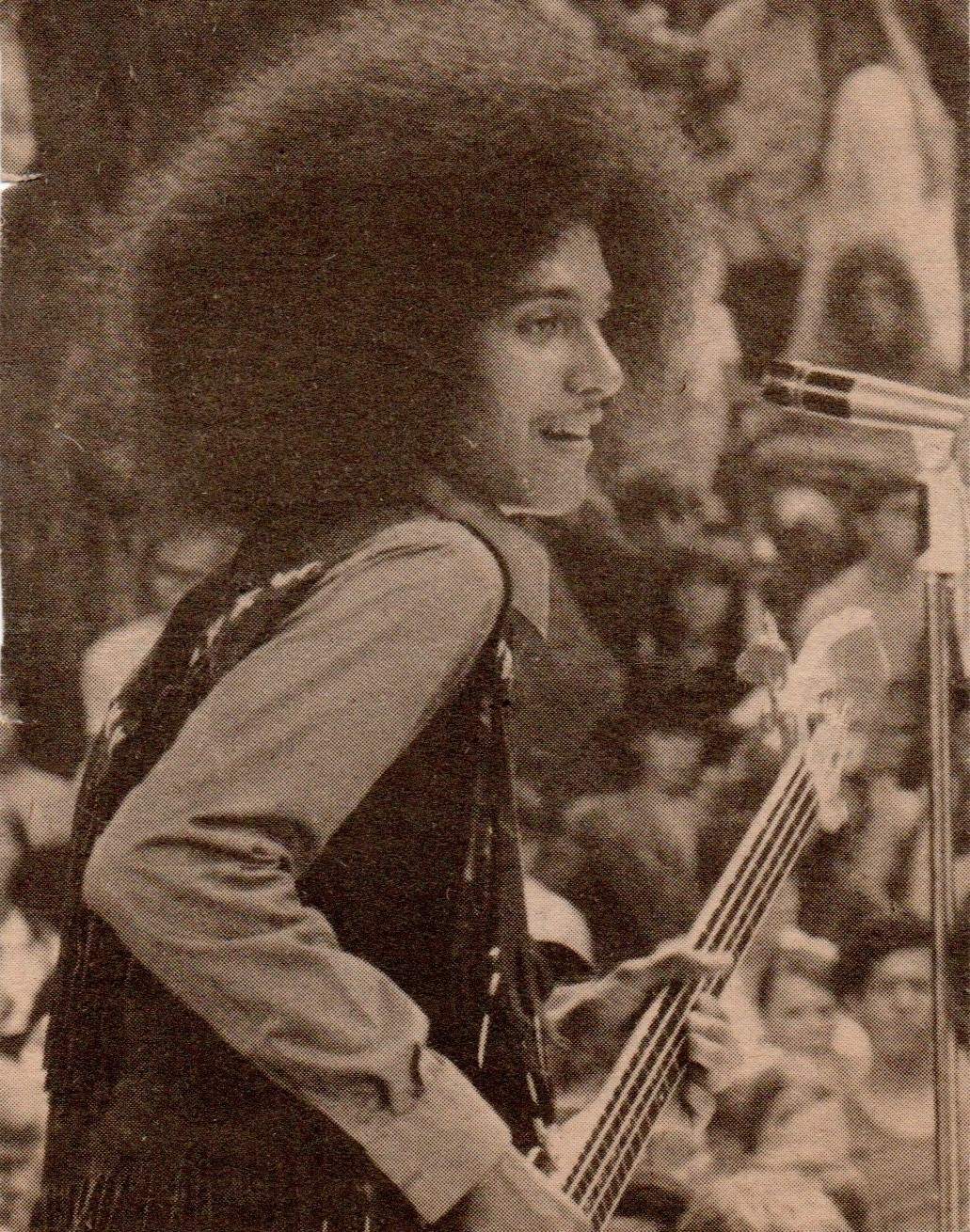
Looking back, what was the highlight of your time in the band? Which songs are you most proud of? Where and when was your most memorable gig?
The highlight for me was traveling to California and playing in a huge house in one of the canyons where Hollywood people like Robert Culp liked to live. Joe had dropped out of the band, so we got Albritton McClain of Chicago to take his place. Our most memorable performance was at Eden Park, where we opened for Joe Walsh. It is believed that over 10,000 people showed up. It was all free in those days.
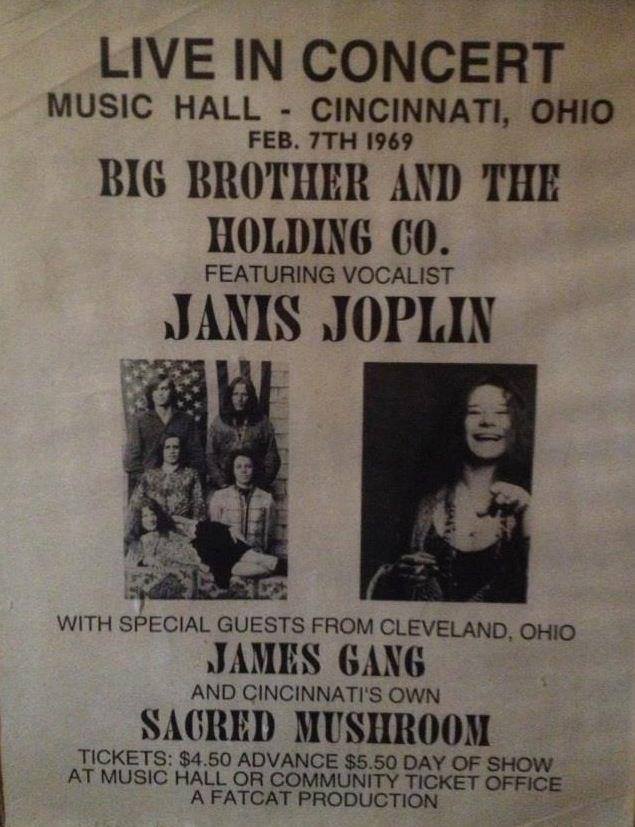
What are some of your favorite memories from The Sacred Mushroom and the 60s in general?
The women, and experimenting with pot and LSD.
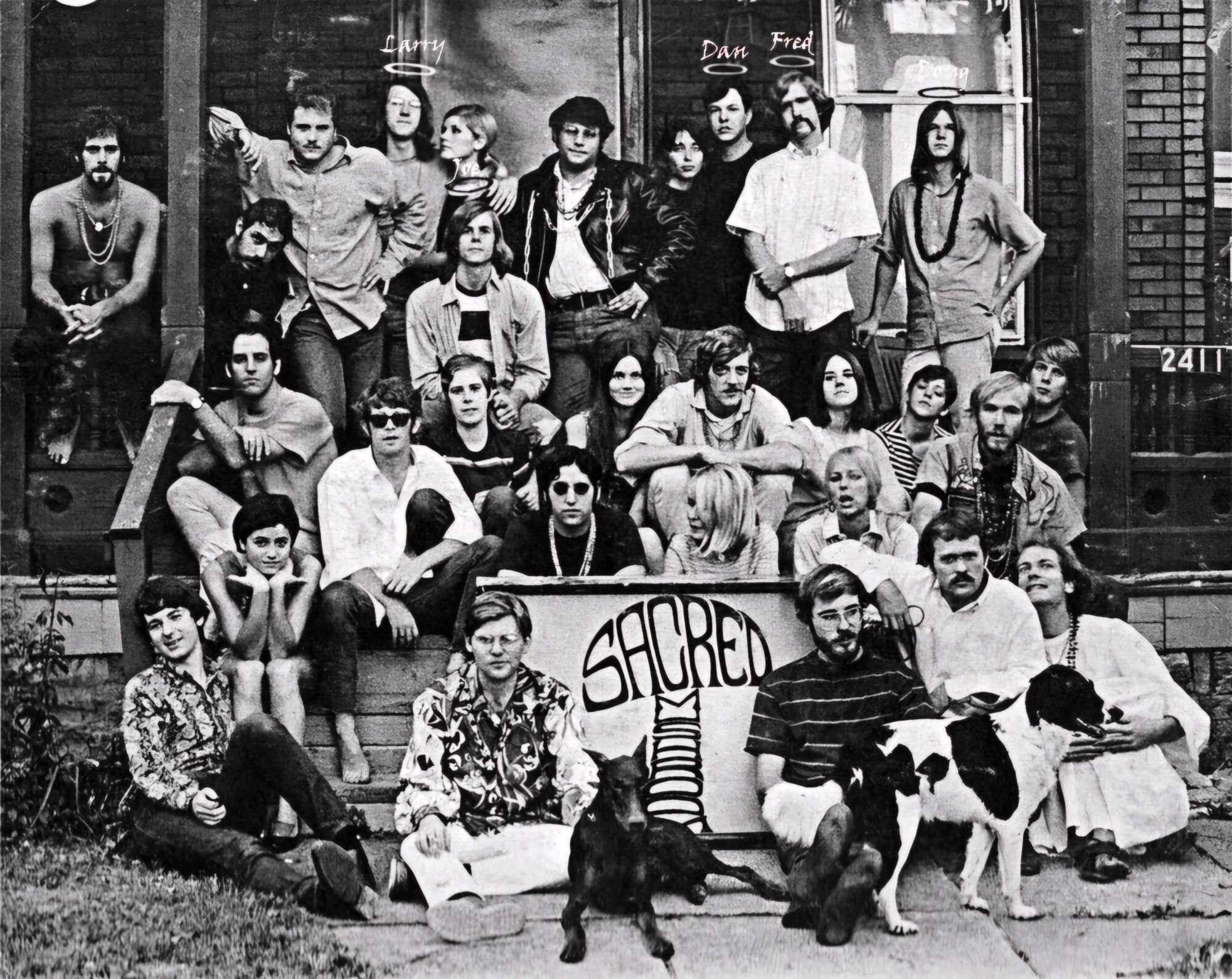
What were some of your favorite bands?
Taj Mahal, the Beatles, Buffalo Springfield, The Byrds, Bob Dylan.
“We recorded an album while in California, but Don Litwin lost it to a fire”
Is there any unreleased material by The Sacred Mushroom?
We recorded an album while in California, but Don Litwin lost it to a fire. Albritton, Larry, Fred, and yours truly recorded it. Only Albritton has any tracks. He lives somewhere in Washington State.
The album was never properly reissued, or am I wrong?
It’s been reissued several times, but mostly illegally.
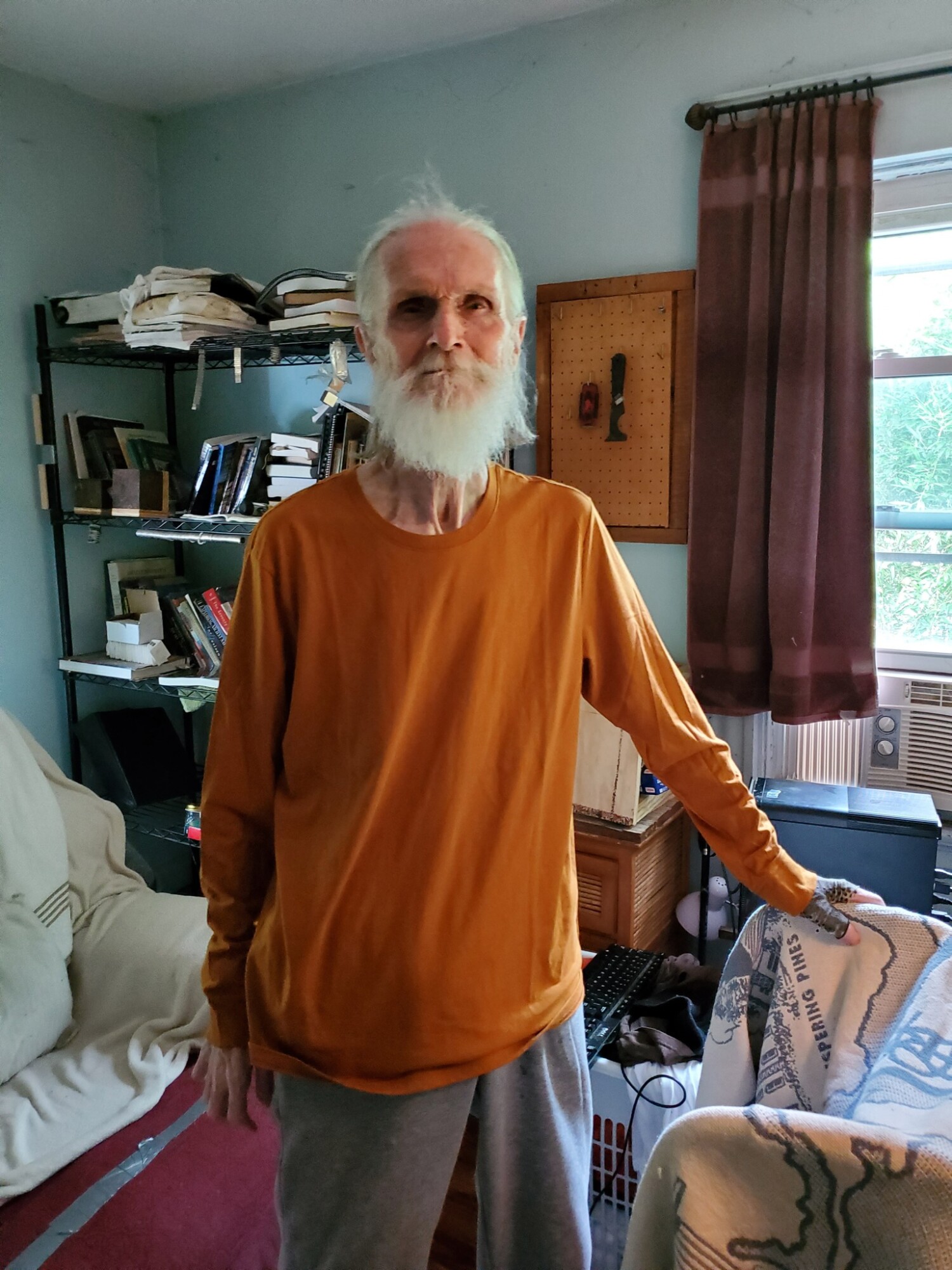
Thank you for taking your time. The last word is yours.
Those days were so much fun. The sixties were a perfect storm that started with Dylan, then moved into the Beatles. Then, everyone started growing their hair long and smoking. By the time the sixties were over, the world had changed. We opened for Janis Joplin and her band at Music Hall. While JJ was playing, the Beatles came on all over the world and introduced ‘Hey Jude’ (about John Lennon and his comment that the Beatles were more popular than Jesus. Jude meant Judas). Well, as the Holding Company played, someone handed me a small TV, and Janis stopped the band and turned the TV toward the audience with a microphone so everyone could hear. There were thousands there to hear. I’ll hopefully never forget that night because I slept with her. She wanted me to play drums for her new band she was tentatively naming “The Full Tilt Boogie Band.”
Klemen Breznikar
Headline photo: The Sacred Mushroom & friends at Mushroom House (colored)

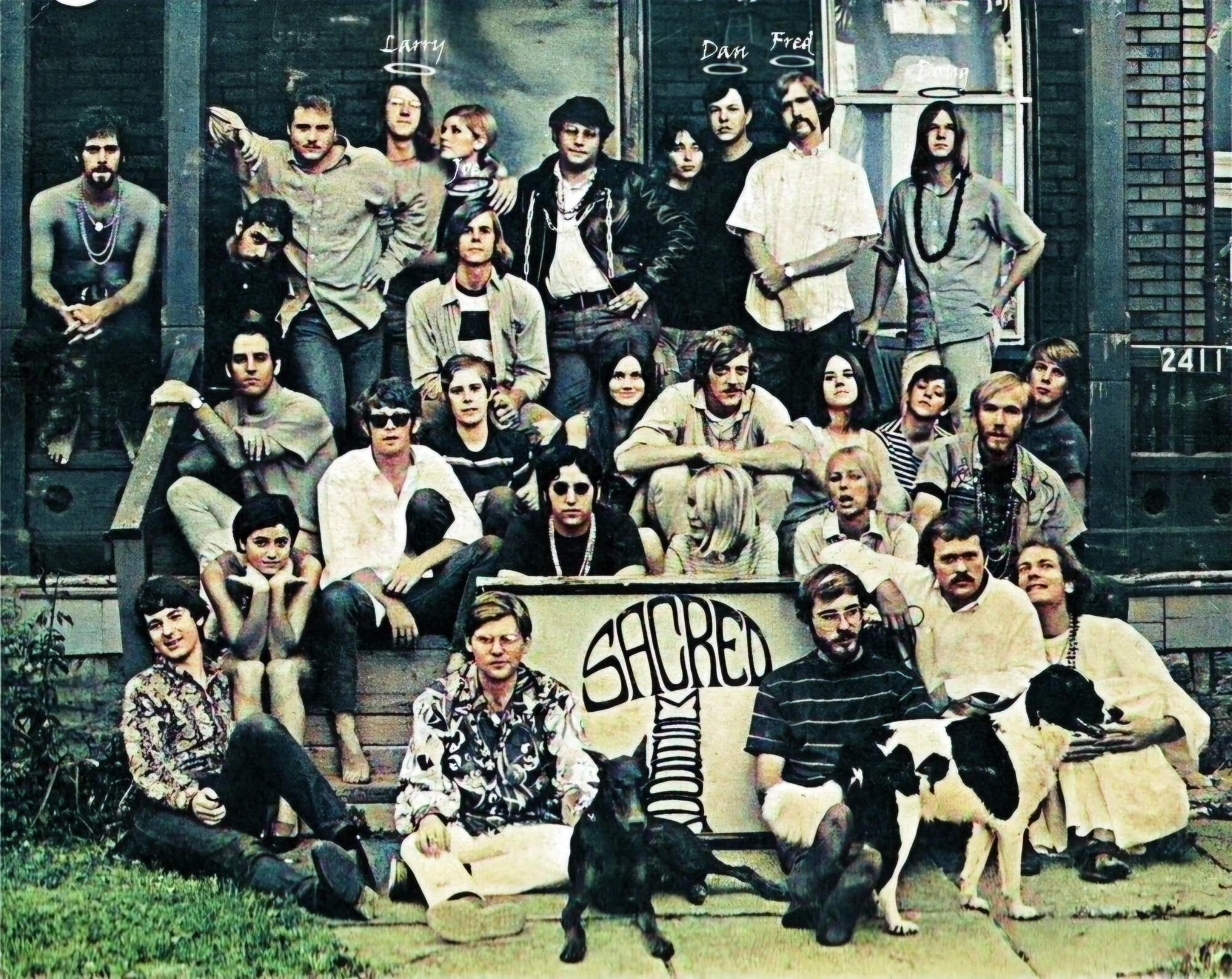
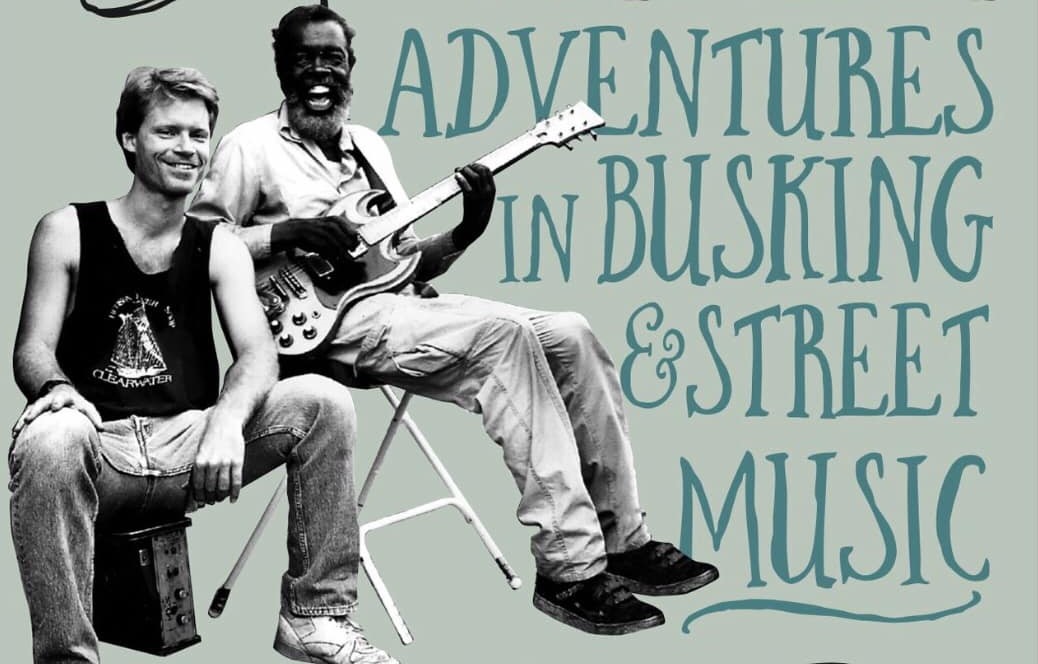
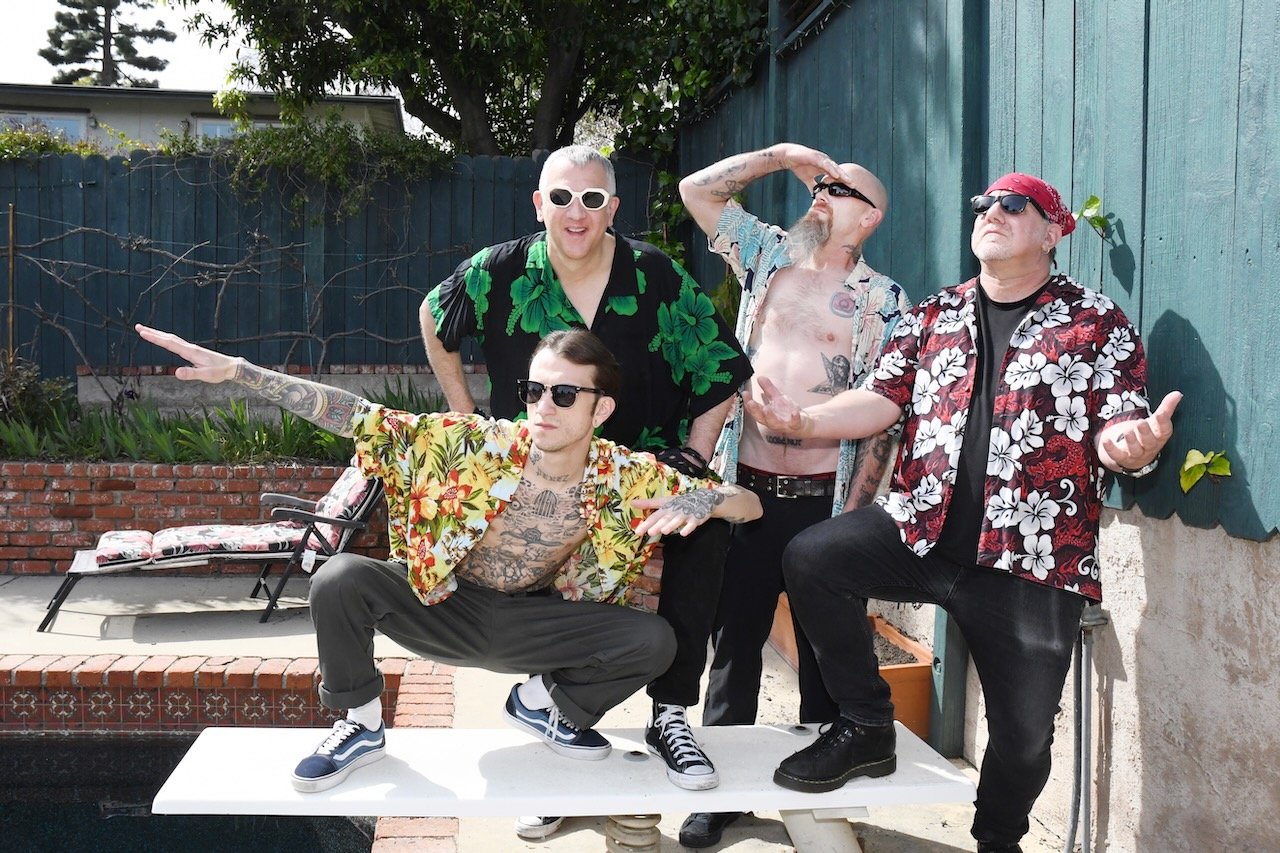
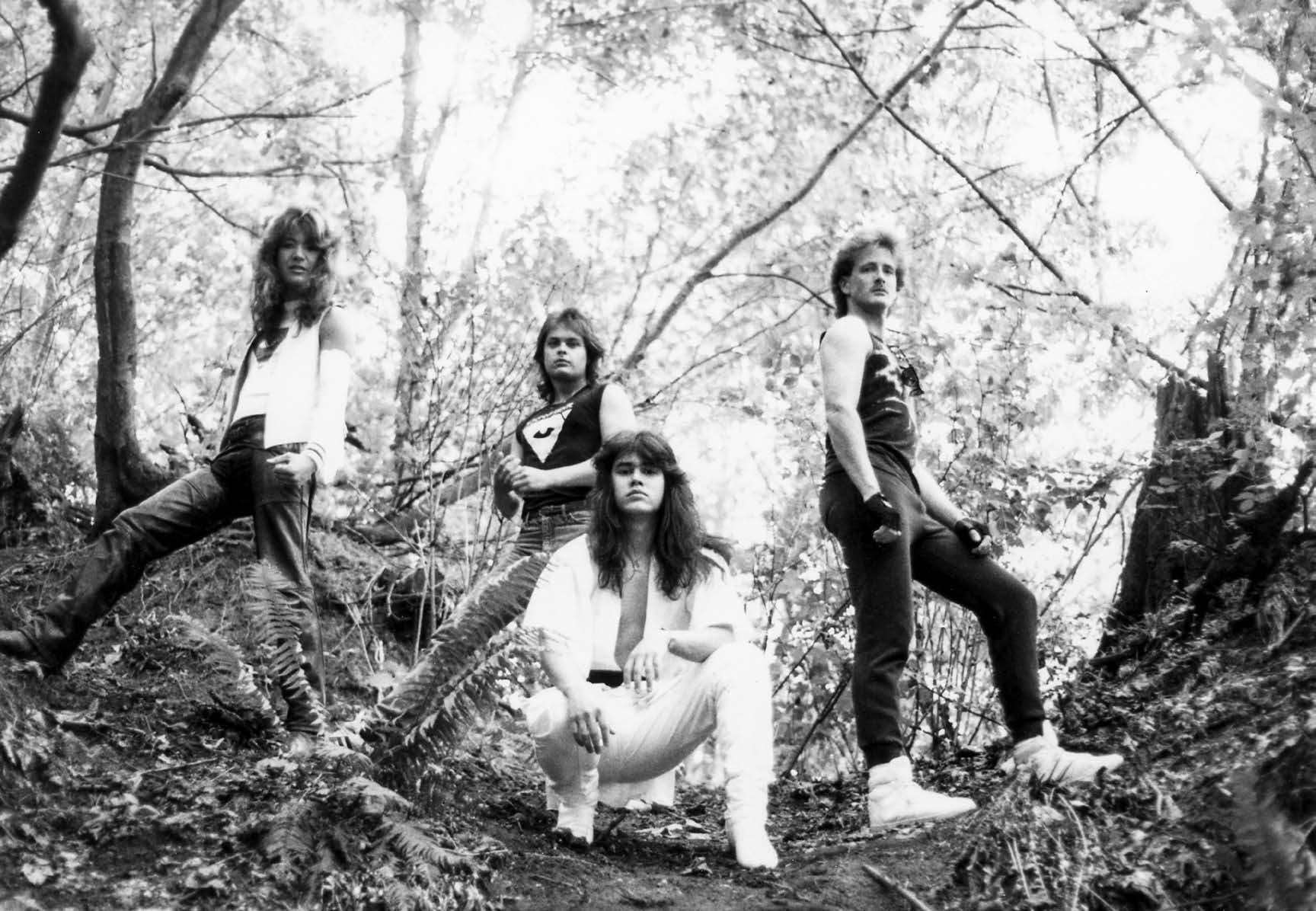
This is so neat to read the stories and see the pictures lost to time. I ended up snagging a very clean original copy of the mushroom album about a year and a half ago, around the time i was first getting immersed into the psych genre. It was one of the big purchases of my adventure into the genre and haven’t regretted it. I found very little information on the band when i first bought my copy. This piece has offered such great insight and such great pictures of the band. There’s been debate in the psych album encyclopedias such as “acid archives” and “fuzz, acid, and flowers” as to if the mushroom album is really psych, pointing it to a more blues based sound as opposed to a psychedelic sound. Regardless of those appraisals, it holds quite superb guitar work. Larry’s guitar phrasing from song to song is so neat to hear. It holds a rather sound and style take that most of the psych records I own don’t have. If anything, the cover is most certainly psychedelic and recognizable among collectors of the genre, which makes it another interesting piece in my collection. It has been such a joy to own and listen to this album and show it others. If you come across this article and have not listened to it, do yourself a favor and give it a try. Hopefully one day a proper reissue will be done so others can have a chance to enjoy it as much as I have.